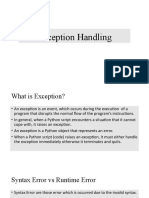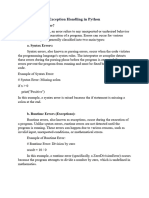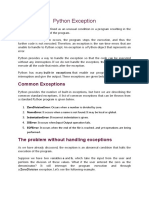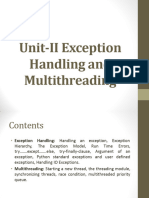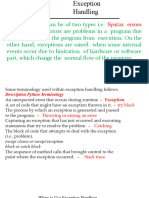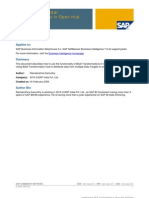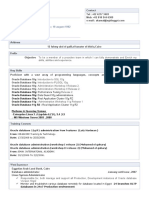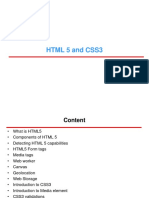0% found this document useful (0 votes)
12 views20 pagesException Handling
The document explains exception handling in programming, detailing two types of errors: syntax errors and runtime errors (exceptions). It emphasizes the importance of handling exceptions to ensure graceful program termination and provides examples of using try-except blocks, including multiple except clauses and the use of finally for cleanup. Additionally, it discusses the control flow in nested try-except-finally structures and the use of else blocks to handle cases where no exceptions occur.
Uploaded by
Davinder BrarCopyright
© © All Rights Reserved
We take content rights seriously. If you suspect this is your content, claim it here.
Available Formats
Download as DOCX, PDF, TXT or read online on Scribd
0% found this document useful (0 votes)
12 views20 pagesException Handling
The document explains exception handling in programming, detailing two types of errors: syntax errors and runtime errors (exceptions). It emphasizes the importance of handling exceptions to ensure graceful program termination and provides examples of using try-except blocks, including multiple except clauses and the use of finally for cleanup. Additionally, it discusses the control flow in nested try-except-finally structures and the use of else blocks to handle cases where no exceptions occur.
Uploaded by
Davinder BrarCopyright
© © All Rights Reserved
We take content rights seriously. If you suspect this is your content, claim it here.
Available Formats
Download as DOCX, PDF, TXT or read online on Scribd
/ 20





